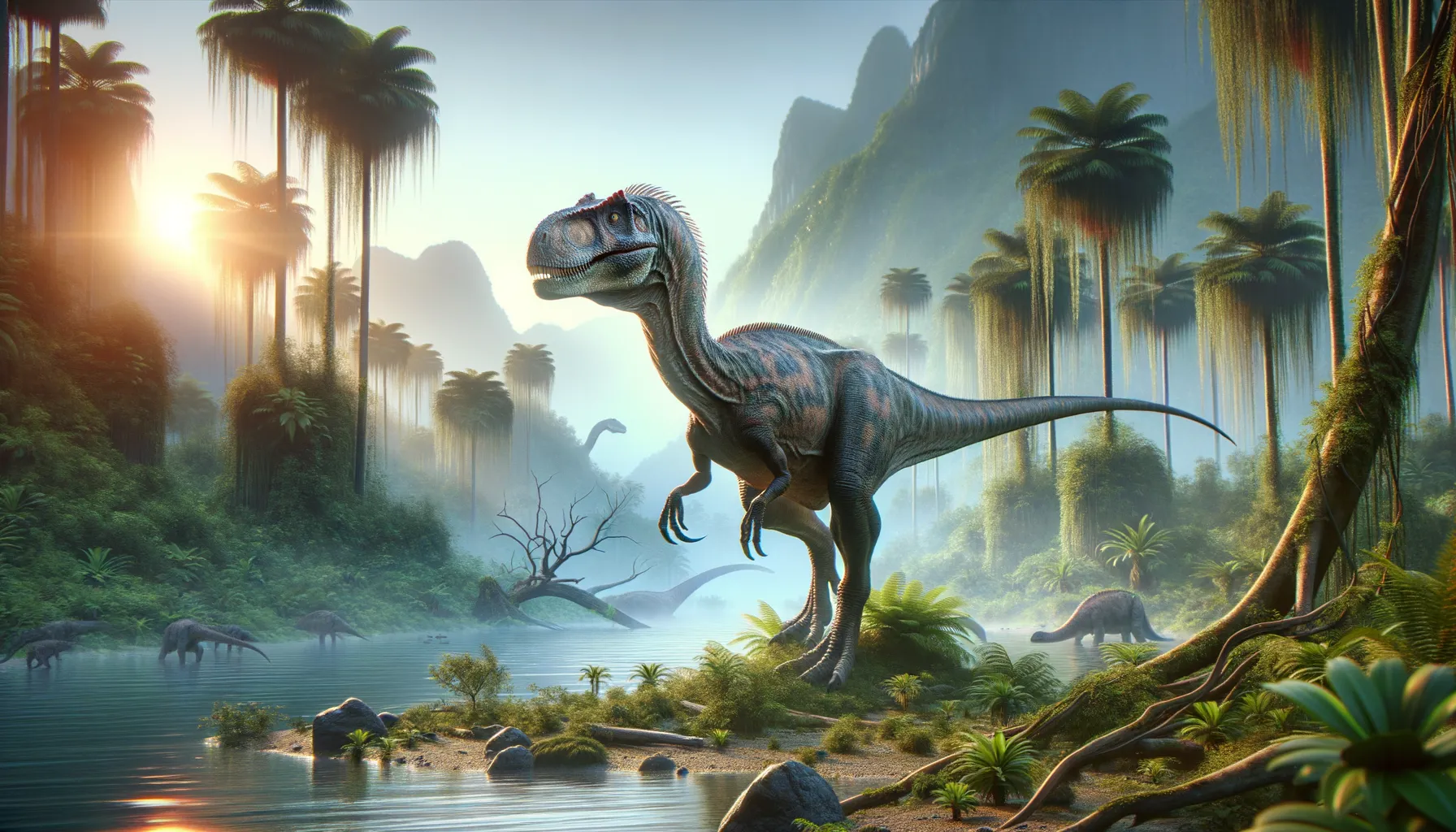
Bolong
Agile herbivore of early Cretaceous Asia.
Period
Cretaceous
Length
Up to 7 meters in length.
Height
Approximately 1.5 meters tall at the hips.
Weight
Estimated around 400-500 kg.
Bolong was a medium-sized herbivorous dinosaur from the early Cretaceous period. It lived in what is now China and is known from several fossil discoveries. This dinosaur was a part of the ornithopod group, which were bipedal plant-eaters. Bolong's fossils provide valuable insights into the diversity and evolution of dinosaurs in Asia during the Cretaceous. Their relatively small stature compared to other dinosaurs suggests they might have been agile and able to navigate dense vegetation.
Diet
Bolong was herbivorous, feeding on a variety of vegetation such as ferns, cycads, and other low-lying plants available in its environment. Its teeth were adapted to efficiently grind plant material, ideal for extracting nutrients.
Hunting
As a herbivore, Bolong did not hunt for prey. Instead, it likely foraged for plant material in the underbrush and open plains. Its keen sense of smell would have helped locate edible plants.
Environmental challenges
Bolong faced environmental challenges such as seasonal changes that impacted the availability of food sources. It had to navigate through densely vegetated terrain, which required agility and possibly a level of social organization to locate the best foraging spots. Predators also posed a significant threat to Bolong, as it needed to remain alert and aware of its surroundings to avoid becoming prey.
Speed
Relatively slow, likely similar to other medium-sized ornithopods.
Lifespan
Estimated to live around 20-30 years.
First discovery
First discovered in the Yujingzi Basin, China in 2010.
Fun Facts
- Bolong was a small dinosaur that lived during the Early Cretaceous period, around 125 million years ago.
- This dinosaur was discovered in what is now the Liaoning Province of China, an area known for its rich fossil beds.
- Bolong belonged to a group of dinosaurs called Iguanodonts, which were herbivorous dinosaurs with beak-like mouths.
- It is estimated that Bolong was about 5 meters (16 feet) long, which is relatively small for a dinosaur of its kind.
- The name "Bolong" means "wave dragon," which reflects both the region where it was found and its presumed lifestyle.
- Fossils of Bolong have provided valuable insights into the evolution of herbivorous dinosaurs in Asia.
- Bolong is one of many dinosaurs that showcase the incredible prehistoric biodiversity of the Liaoning region.
Growth and Development
From hatchling to adult, Bolong underwent significant growth, likely similar to other ornithopods. Young Bolong would have been vulnerable to predators, prompting them to stay within protective groups or near adults. The growth rate of Bolong might have varied depending on resource availability, with rapid growth during abundant food periods.
Habitat
Bolong inhabited lush environments with plenty of vegetation, such as forests and floodplains. This habitat provided ample food resources and cover from predators. Regular water availability and a temperate climate would have made these regions ideal for sustaining herbivorous dinosaur populations.
Interaction with other species
Bolong lived alongside various dinosaur species, some of which were predators requiring vigilance and group defense strategies. It may have formed mixed-species groups with other herbivores for added protection. Its presence helped shape the ecosystem's balance, influencing plant life distribution and density.
Natural lifespan
Bolong's natural lifespan was likely around 20-30 years in favorable conditions.
Reproduction
Bolong reproduced by laying eggs, as was typical among dinosaurs. The eggs were likely laid in nests built from vegetation, offering some protection from the environment and predators. Parental care may have been present to a degree, potentially involving guarding the nest or young.
Social behaviour
Bolong might have exhibited group behavior, foraging in small herds to enhance survival. The social structure would have facilitated communication and defense against predators. Cooperation during foraging could optimize food finding and consumption, benefiting individuals and the group collectively.
Fossil locations
Most notable fossil discoveries of Bolong were found in the Yujingzi Basin in China. The locality reflects the diverse habitats inhabited by Cretaceous fauna. These fossils have been significant in understanding the distribution and evolution of ornithopods in Asia.
